Asheville beekeepers creating a buzz; honey festival coming June 5
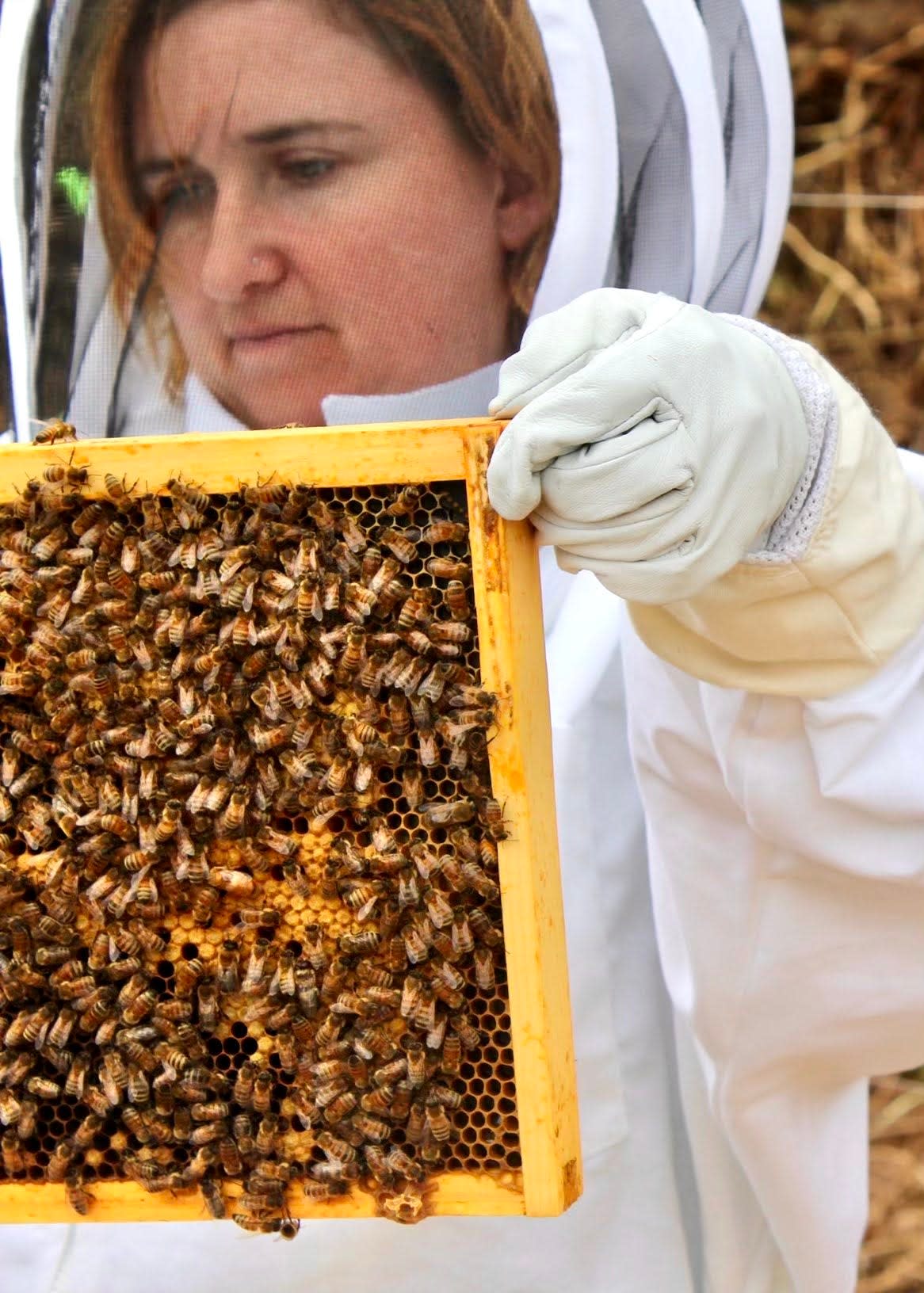
ASHEVILLE - There's a good reason to sit back on a Saturday morning instead of mowing the lawn. It's all in the name of saving the honeybees.
In the U.S., an international movement called "No Mow May" has become popular. People are encouraged not to cut their lawns to create a natural habitat of grass, weeds and flowers for the early pollinators.
“People let their ‘weeds and dandelions’ flourish and don’t mow at all so that in the beginning of the season — April and May in most places — the bees have a food source,” Kim Allen, co-owner of Asheville Bee Charmer, said. “While it’s not always beautiful to have what we always think of as weeds in our front yards, it’s food for bees, so it’s beneficial.”
The initiative is in response to the steady decline in the honeybee population that's taken a global toll. Local beekeepers and honey producers are on a mission to prove that though they are small, a world without honeybees would make a mighty big impact.
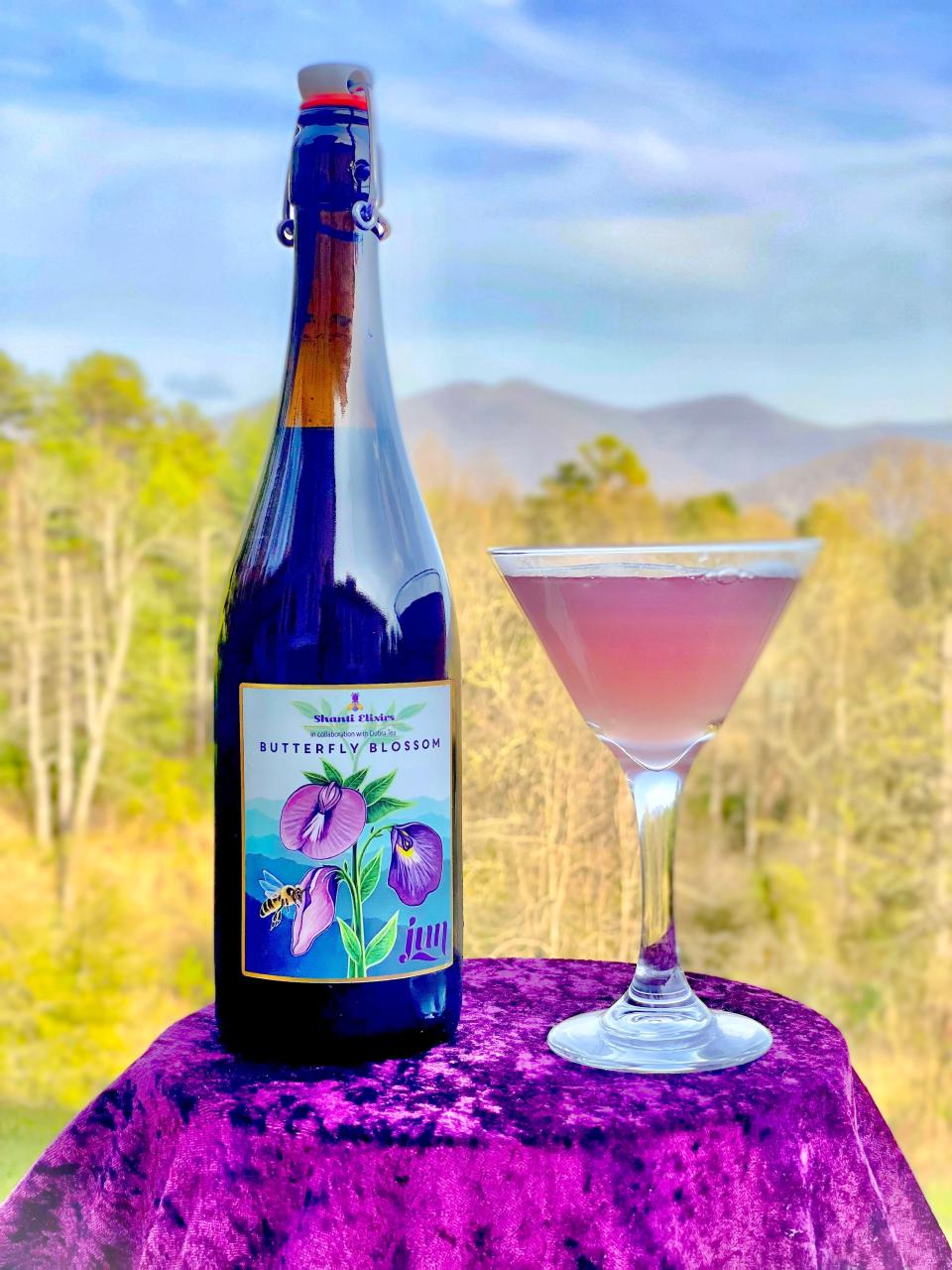
“If the honeybees disappear, so would our favorite foods — apples, blueberries, avocados, chocolates. All of that is going to disappear if we don’t take care of our honeybees,” said Shanti Volpe, founder of Shanti Elixirs, a local beverage company that specializes in jun — a fermented drink using green tea and honey.
Beekeepers have been witnessing the population decline and warn against the ripple effects it could have if the trend continues. And even those who don't partake in the sweet treat have reason to do their part to lighten the honeybees' load and ensure their survival.
Plan for survival
Saving the honeybees can begin in a person’s backyard.
A leading cause of colony collapse disorder is neonicotinoids, a class of insecticides that affect insects’ central nervous systems, Allen said. Other factors are GMO crops and monocrops — growing on type of crop — because there’s no diversity for bees to feed on.
“They’re trying to take neonicotinoids out of our agricultural system because they really think it’s affected the bee population,” she said. “The simplest thing for some people is to stop using pesticides and plant pollinator-friendly gardens."
A person doesn't have to be a skilled gardener to do their part, she said.
"There are certain herbs you can plant that can be put easily in a pot that can encourage the honeybees – things like chives, fennel, bee balm, thyme and dill," Volpe said. "Herbs that we use in our daily cooking practices are beneficial to our pollinators and honeybees.”
Dandelions, wildflowers and indigenous flowers to North Carolina are ideal food sources, as well as honeybee-friendly flowers such as milkweed, sunflowers and goldenrod, Volpe said. If someone isn't willing to let the entire lawn to become overgrown, she suggests leaving a patch to allow grass, dandelions and clovers to grow.
“If you put organic, local plants that are native to the area in your yard what you’re doing is supporting the local, native pollinators,” said Rebecca Robertson, director of the Mayan Melipona Bee Sanctuary Project. “That’s really an easy thing for all of us to do. And make sure the plant isn’t pre-treated with any chemicals, especially neonicotinoids.”
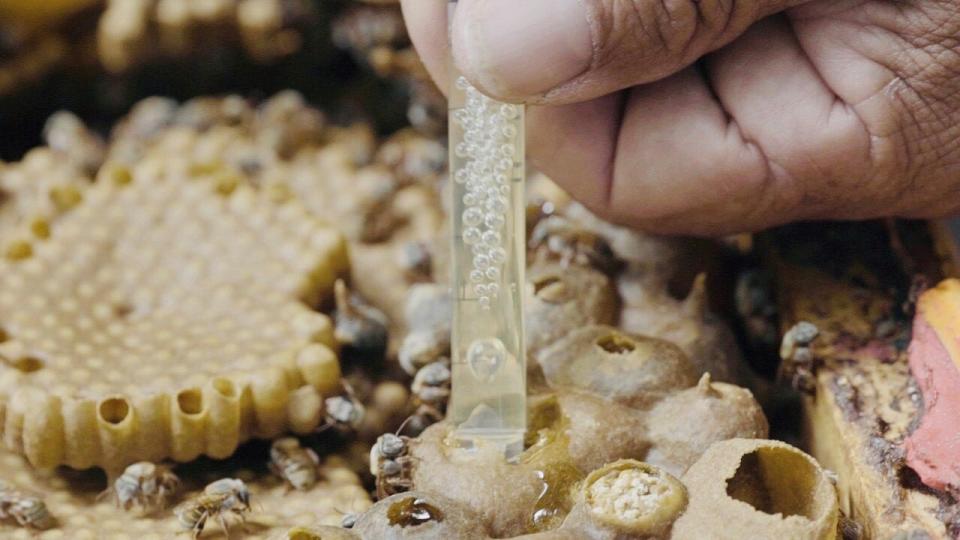
On a global scale, Robertson has devoted efforts to protecting an ancient species of bees whose population has “dropped alarmingly."
The Mayan Melipona Bee Sanctuary Project, in alliance with Asheville SisterCities, supports the 17 species of Melipona bees and the women “beetenders” of Yucatan and Meso America.
“This little, stingless honeybee is actually the primary pollinator for the rainforest,” Robertson said.
The project was launched to protect the native bees and support the women in their businesses to sell honey and work to sustain the health of the rainforest, indigenous crops and medicinal plants.
Beekeepers and honey producers are working to save the hives and create an environment in which honeybees thrive. But, like a bee colony, humans must work together to accomplish the larger task at hand.
Another way to assist is to support organizations dedicated to researching and finding solutions, Volpe said.
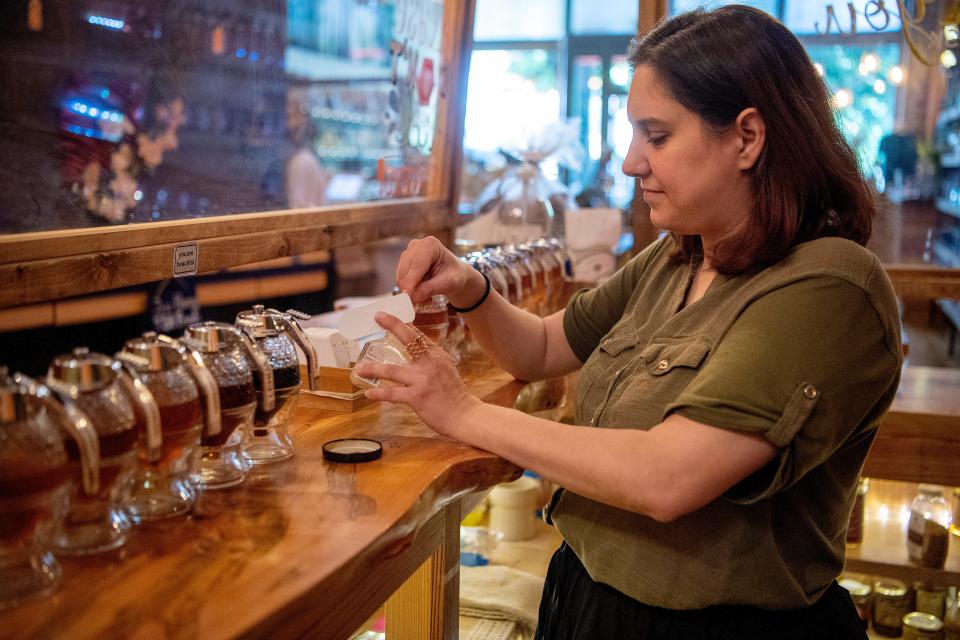
United front
The Center for Honeybees Research, based in Asheville, was founded to research the species to help solve the crisis, and collect and share data, education and other resources with beekeepers. The nonprofit studies factors including the health of hives and the queens, and threats to the population.
“Beekeepers lose between 30-45% of their hives yearly,” said Terri Lechner, director of community outreach. “Approximately, there are $500 billion that pollinators are responsible for globally but just in the U.S., it’s $15-20 billion.”
Honeybees carry a weight of responsibility that goes beyond making honey. A loss of honeybees doesn’t only affect fruit and vegetable crops, but meat and other food, she said. It also demonstrates the decline of other ecosystems.
“All insects are in decline and there are a lot of pollinators besides bees — there’s birds, bats, butterflies and beetles — all of those different insects are important to pollination,” Lechner said. “Pollinators provide one out of every three bites of food that we eat.”
The population decline is widespread, but Allen is hopeful that things are turning around. In the Asheville area, honeybees are flying, Allen said, and she is optimistic about the season.

“Maybe 2-3 years ago we got to the point of maybe a 40% loss. It’s seemed to be back down locally and nationally down to 30-35%, so I feel like maybe we’re getting a handle on some of the viruses that they’re susceptible to and I’d like to see it come down below 25-30%," Allen said.
“You can tell by the number of bees from year to year. They appear to be pretty healthy this year, so fingers crossed. I’ve talked to some other people in other parts of the Southeast, U.S., and they feel pretty good about this year’s crop,” Allen said.
Cooking and healing with honey
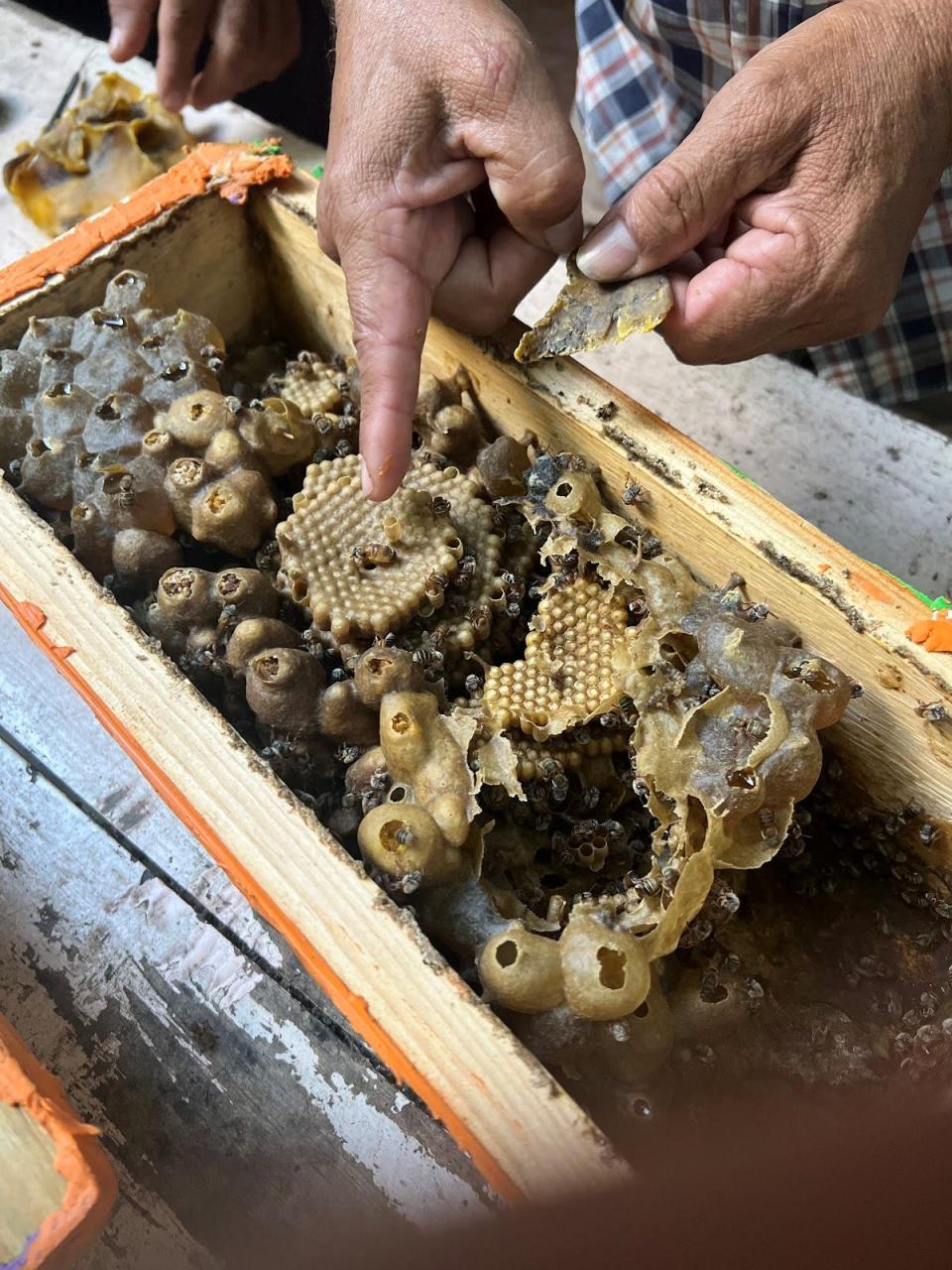
Allen and her wife, Jillian Kelly, founded the retail business and began a bee farm in 2014. They operate two stores in downtown Asheville that offers their locally produced honey and honey-based products, as well as honey sourced nationally and internationally.
Customers are invited in to taste the wide assortment of honey and experience their unique flavors and learn the many benefits and importance of the products and makers.
Asheville Bee Charmer sells two major local kinds of honey — wildflower and sourwood — plus honey sourced internationally. Sourwood honey is a bestseller.
“The sourwood is what we call monofloral honey which essentially means there’s one primary nectar source that the bees are feeding on, so in this example, it would be the sourwood hardwood tree,” Teresa Tribolet, assistant manager of the Asheville Bee Charmer, said. “The flavor is very distinct because it’s coming mostly from the nectar of that tree. Sourwood is kind of rich and warm and buttery and caramelly. I usually refer to them as a butterscotch flavor.”
“The wildflower is what we call polyfloral which means that there’s not one particular plant that’s more prevalent in that batch of honey. It’s whatever wildflowers the bees were feeding on,” Tribolet said. “The flavor is a nice, sweet sort of traditional floral.”
Wildflower honey is particularly good for combating allergies, Tribolet said. She recommends eating about a teaspoon of raw honey a day during allergy season — or leading up to allergy season as a preemptive step.
Buckwheat honey is good for sore throats, as it has antioxidants and there have been studies to determine its effectiveness compared to over-the-counter cough syrup, Tribolet said. Manuka honey — which Tribolet coined the “Wagyu beef of honey” — is great for sealing and healing wounds, she said.

“Honey is antimicrobial and antibacterial and there’s a chemical that occurs in honey and that’s why that’s true. It’s called methylglyoxal. But in manuka honey, it occurs three or four times the normal amount and that’s why burn units in hospitals use it for burn victims," Tribolet said. "A lot of people I know will, anecdotally, use it for cuts, burns, scrapes, poison ivy — they cover their arm with manuka honey and seal it up for a couple of days to start that healing process.”
Honey has the most impact if consumed raw and directly, as opposed to in a heated drink or cooked meal, when it comes to allergies, Allen said.
Honey can be used to sweeten and enhance a beverage or dish, too. Asheville Bee Charmer published a cookbook on how to use various types of honey in different dishes.
Volpe uses her beverage business's platform to educate customers, too. She plans to create a nonprofit educational component for a honeybee apiary where we can teach the public how to take care of the bees in a holistic manner, she said.
Shanti Elixirs use honey from Volpe's bee farm and with other regional beekeepers for the fermented line of beverages.
“It’s similar to kombucha but a little bit lighter and smoother because it’s made with raw honey and green tea and a different culture as opposed to the black tea and the sugar of kombucha,” Volpe said. “What makes jun pre-and probiotic is the honey.”
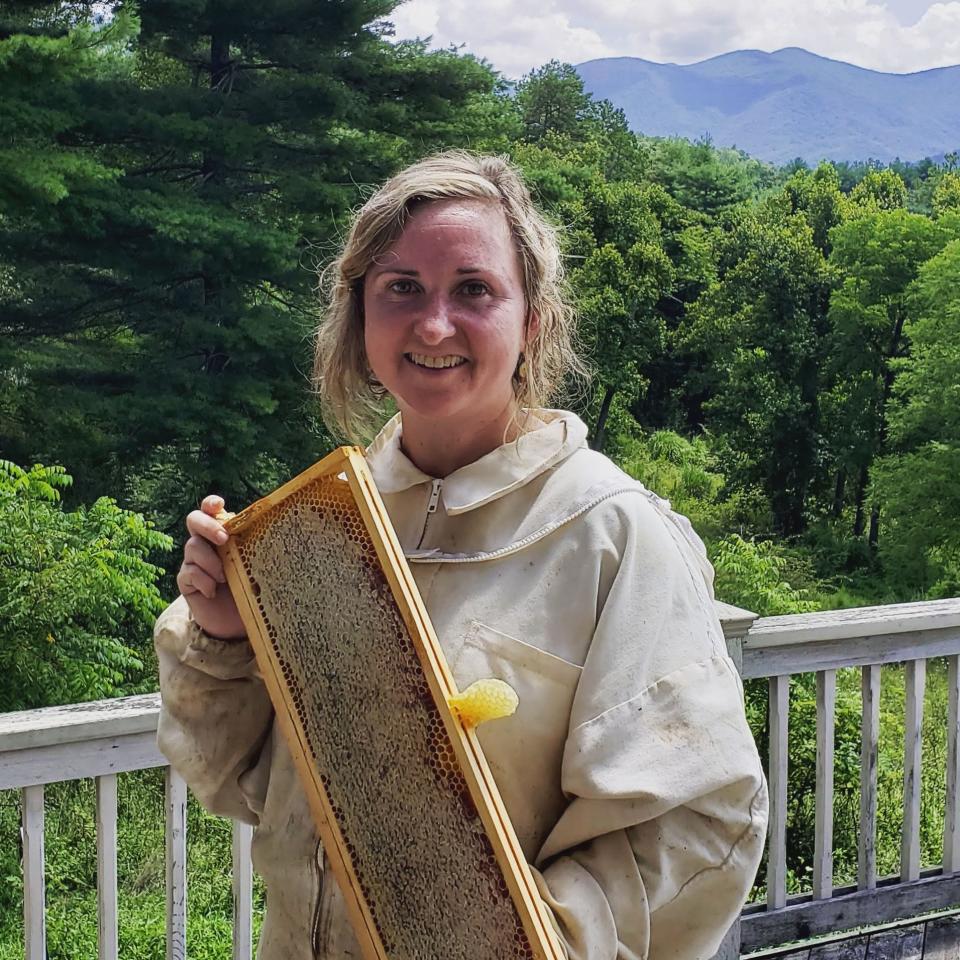
Jun has properties that make it an immune-boosting beverage and is recommended for allergies and improving gut health, she said.
“Because we use raw honey it has all of the benefits of raw honey,” Volpe said. “Raw honey contains antibacterial, antifungal, antioxidant, anti-inflammatory properties. Honey energizes the body and boosts immunity, helps to fight bad bacteria, and helps with seasonal allergies. Jun is such a wonderful elixir for all-over health.”
Honey in big box stores may have additives or be pasteurized.
“When you are buying honey, please buy honey at local farm and tailgate markets and support your local beekeepers,” Robertson said. “Buying local honey, planting native plants and no chemicals are three things that all of us can do that would help the bees."
How to get a taste
People are often surprised that they like honey when they try pure, local honey because it differs from what people may have grown up with, which is often clover honey from the grocery store, Allen said.
“One of the greatest things is when you get people at the honey tasting bar and they’ll come back like, ‘Oh, I’ve had honey before’ and they’re reluctant to try them all. Once you can get them to try two or three, it’s a lot like wine. They all taste very, very different,” Allen said. “They think it all tastes like clover honey, which is frequently considered the honey of some people’s childhood, and they’ll come in and find some fabulous flavor that they absolutely love.”
Another way to taste and learn about honey and honeybees is the inaugural Asheville Honey Festival, June 5, 12-5 p.m. at Salvage Station, 468 Riverside Drive.
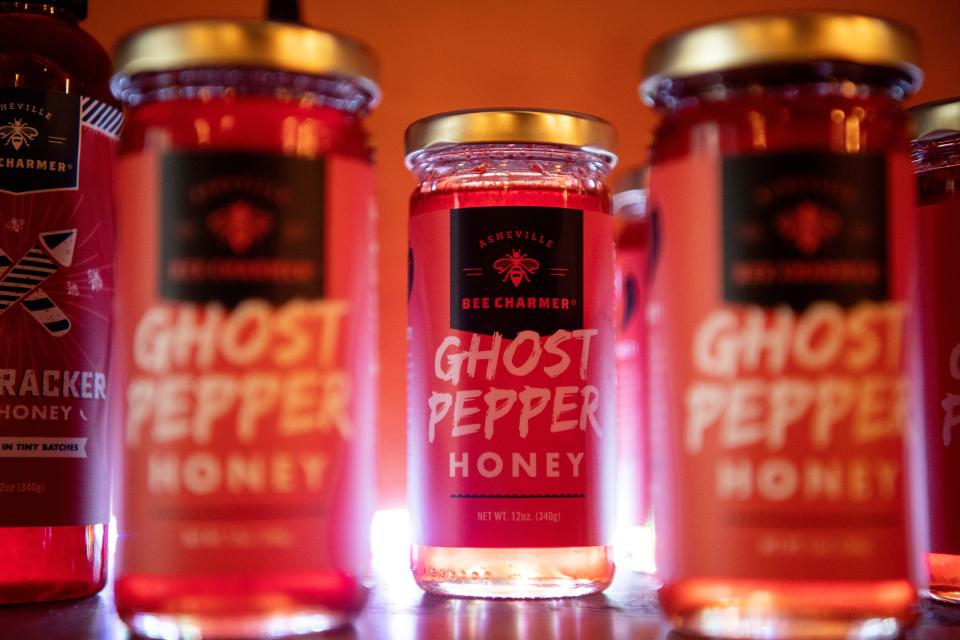
Tiana Kennell is the food and dining reporter for the Asheville Citizen Times, part of the USA Today Network. Email her at tkennell@citizentimes.com or follow her on Twitter/Instagram @PrincessOfPage. Please help support this type of journalism with a subscription to the Citizen Times.
This article originally appeared on Asheville Citizen Times: Things to know about Asheville Honey Festival, honeybee population

